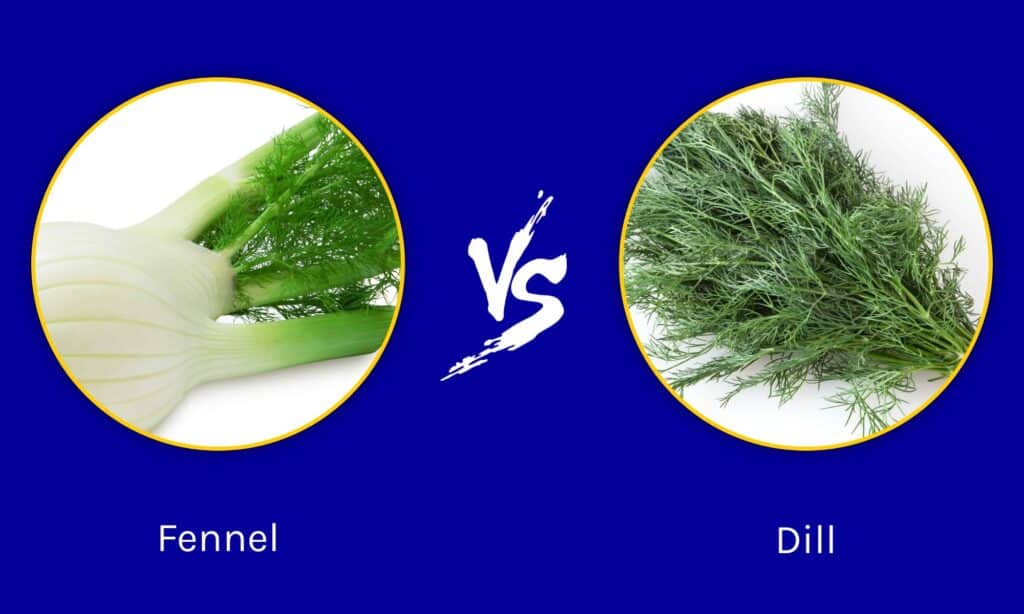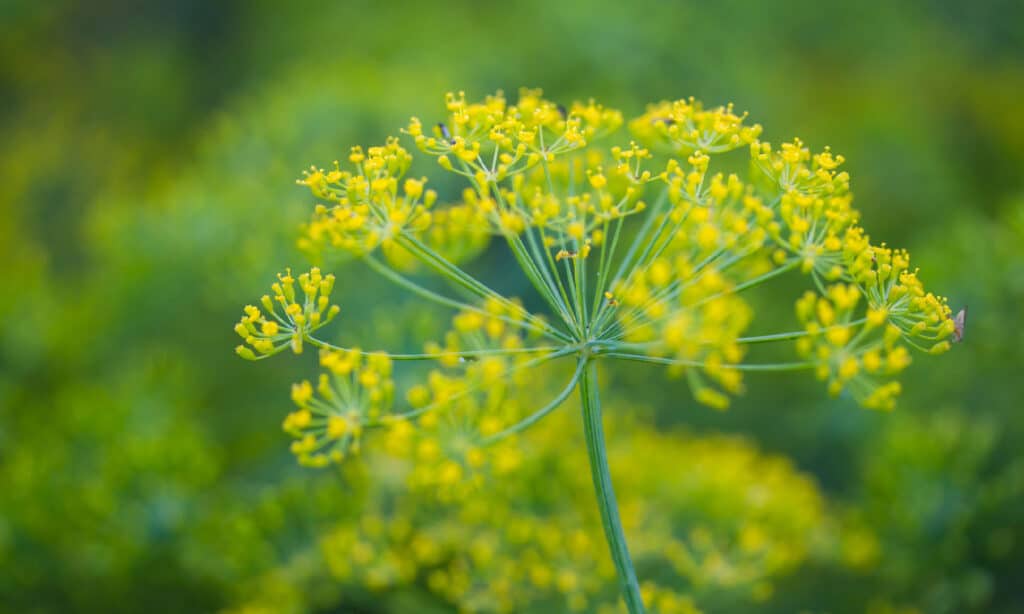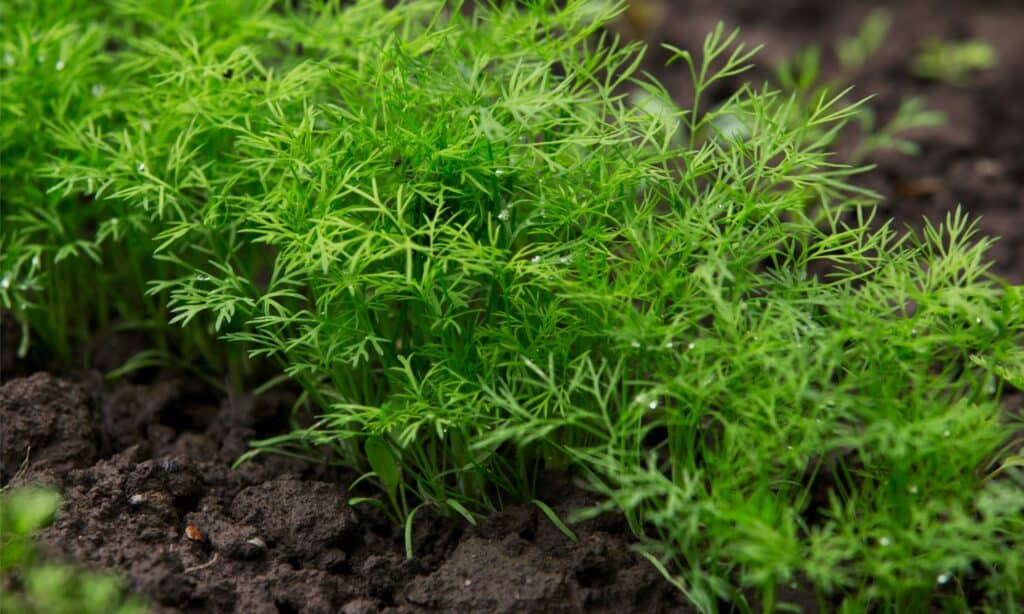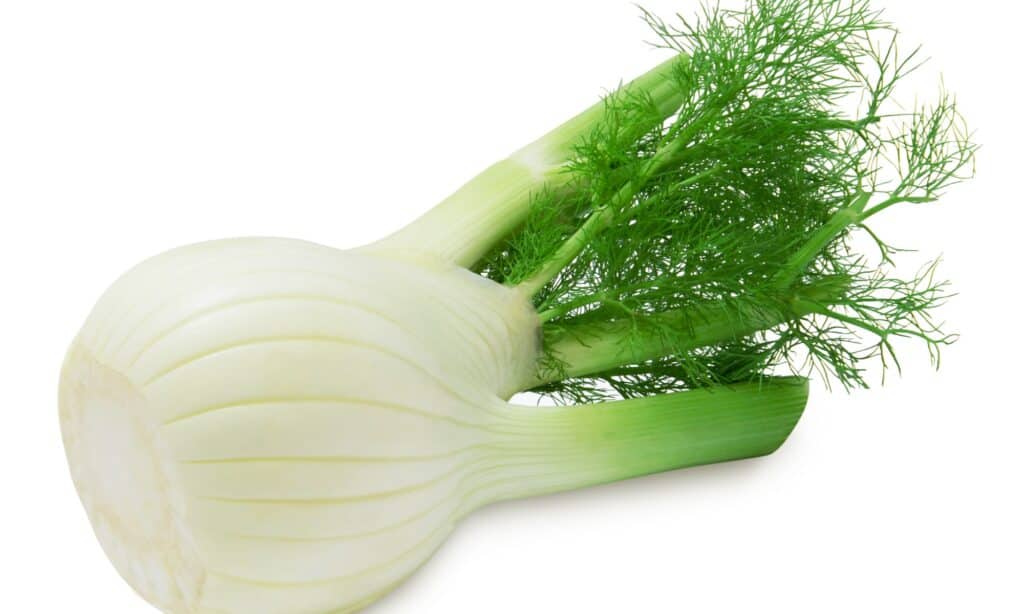While they appear strikingly similar upon first glance, there are a number of differences between fennel vs dill. Both members of the Apiaceae family, there are undeniable traits that both fennel and dill share. But are they the same plant, or are there more traits separating them rather than bringing them together?
In this article, we will address everything you need to know about both fennel and dill plants, including how they are different from one another. We will go over what both of these plants look like, as well as what they are typically used for. Finally, we will address where these plants came from and how you can best grow them in your own garden. Let’s get started!
Comparing Fennel vs Dill

| Fennel | Dill | |
|---|---|---|
| Scientific Classification | Foeniculum vulgare | Anethum graveolens |
| Description | Tall plant variety sprouting from a large, white bulb. Reaches heights of nearly 8 feet, with long, spindly leaves. The hard leaves are a gray-green color, similar to dill, but thinner in appearance. Yellow flowers form as umbels, or clustered groups atop the plant | Small herb variety sprouting without a large bulb. Reaches up to 2 feet tall with long, delicate leaves in a soft texture. Sprouts white or yellow flowers when reseeding itself, and these form umbels. Its leaves are slightly wider than fennel, but it is difficult to tell this |
| Uses | Popular in some culinary capacities, but also used as a primary ingredient for liquorice flavors, breath fresheners, and absinthe | Popular in many cuisines for its delicate flavor; tastes grassy and light, and is ideal when used fresh. Also the key ingredient in dill pickle production |
| Origin and Growing Preferences | Originated in the Mediterranean; prefers full sun and enriched soil | Originated in Europe and Asia; prefers hot summer sun and well-draining soil |
| Special Features | Its liquorice flavor makes it divisive, but it was once used as bug repellant! | Black swallowtail caterpillars love eating dill, and it’s a great attraction for many pollinators! |
Key Differences Between Fennel vs Dill

The leaves of the dill plant are softer and wider compared to the thin and texturally different leaves found on fennel plants.
©iStock.com/AnnaDudek
There are a number of differences between fennel and dill. For example, fennel has a large bulb and thinner leaves compared to the bulbless dill plant. Fennel plants grow much taller and larger than dill plants. Finally, dill is a key ingredient in pickle production, while fennel is key to producing absinthe.
Let’s go over all of these details and a few more now.
Fennel vs Dill: Classification
There’s a reason why fennel and dill look similar to one another, given the fact that they both belong to the same plant family. However, they belong to very different genuses and species from each other. For example, fennel is classified as Foeniculum vulgare, while dill is classified as Anethum graveolens. In fact, dill is the only member of the Anethum genus.
Fennel vs Dill: Description

When it comes to how they taste, fennel has an extremely distinct licorice taste, while dill has a fresher, more grassy flavor.
©iStock.com/DevidDO
It can be very difficult to tell the difference between dill and fennel if they are growing in the same garden. However, there are few things that you can look for in order to tell them apart. For example, fennel plants grow much larger than dill plants, often by a few feet. In addition, the leaves of the dill plant are softer and wider compared to the thin and texturally different leaves found on fennel plants.
Both of these plants sprout yellow umbels or flowers that are clustered in a certain fashion, but only fennel plants have a large bulb that is edible, while dill plants have no bulb. When it comes to how they taste, fennel has an extremely distinct licorice taste, while dill has a fresher, more grassy flavor. You can easily tell these plants apart based on how they smell as well!
Fennel vs Dill: Uses

Dill is the key ingredient to creating dill pickles, while fennel is the key ingredient in absinthe production.
©iStock.com/IlonaImagine
Dill and fennel are popular in a number of kitchens around the world, as they have a number of culinary uses. For example, the entire fennel plant is used for cooking, whether eating raw or roasted, while dill is typically used as an herb and garnish. In addition, dill is the key ingredient to creating dill pickles, while fennel is the key ingredient in absinthe production. Both of these plants have a number of other culinary uses, often distinct from each other.
Fennel vs Dill: Origin and How to Grow
Despite both fennel and dill being cultivated around the world, including in many wild and natural areas, they have different origins. For example, fennel originated in the Mediterranean, while dill originated in Eurasia. Both of these plants enjoy full sunlight, though fennel prefers to be planted in spring or fall, while dill thrives in the heat of summer.
It is important to note that fennel has become naturalized in many areas of the world, growing in landscapes that are permanently altered by its presence. Dill also grows in wild areas, but it has a much smaller effect than fennel does overall. However, make sure to avoid planting dill near your fully grown tomato plants, as it can inhibit their growth!
Fennel vs Dill: Special Features

Both of these plants enjoy full sunlight, though fennel prefers to be planted in spring or fall, while dill thrives in the heat of summer.
©iStock.com/SvetlanaK
Fennel and dill are both special and unique plants for a number of reasons. For example, fennel is prized for its unique liquorice taste and smell, even used as a bug repellant centuries ago. Dill is equally prized for its flavor, by people and animals alike. The black swallowtail butterfly is attracted to the dill plant, and caterpillars of this species tend to eat the delicate leaves. This is something to keep in mind in your own garden, though flowering fennel and dill are great for attracting pollinators!
The photo featured at the top of this post is © iStock.com/DevidDO
Thank you for reading! Have some feedback for us? Contact the AZ Animals editorial team.






